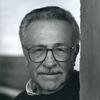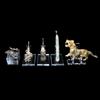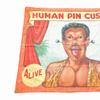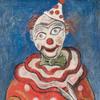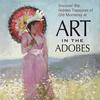Spooky Images Abound in the Traveling Exhibition 'Supernatural America: The Paranormal in American Art'
- October 27, 2021 22:48
Just in time for Halloween, Kentucky's Speed Art Museum welcomes Supernatural America: The Paranormal in American Art. Organized by the Minneapolis Institute of Art (Mia), this major exhibition debuted at Toledo Museum of Art and travels to the Speed (on now until January 2, 2022) before ending its tour at Mia, where it will be on view February 19 through May 15, 2022.
“This groundbreaking exhibition brings together American artists from a wide range of artistic practice, cultures, and generations in an effort to question and make sense of the idea of the otherworldly and the unexplained,” says Speed curator Erika Holmquist-Wall. “Whether these artists are drawing upon faith, folklore, or even experience, their work calls out the history and the truths that haunt this country.”
Supernatural America presents a unique and harrowing collection of artworks from 1800 to the present that reflect on the haunted nature of America and its history. From Native American spiritual traditions to the Salem Witch Trials to Afrofuturism, the exhibition tracks this country’s complex and complicated relationship to the otherworldly.
Ghosts of a violent US history, whether Native American genocide, slavery, or the Civil War, remain unsettled and periodically resurface to make the present face the past. In intimate moments of mourning, the will to make contact with spirits of the dead drove cultures of mediumship, new ritual practices, and a popular culture around Spiritualism. Artists have been integral to visualizing these ghosts, whether national or personal, and in doing so have embraced the mysterious and unexplained. In the twentieth century, anxieties about technology, atomic weapons, and the trauma of war inspired ideas about worlds beyond a troubled America. This exhibition explores the numerous ways artists in the U.S. made sense of their own experiences of the paranormal and supernatural, and in doing so developed a rich visual culture of the intangible.
The exhibition features the work of internationally recognized artists such as Reverend Howard Finster, Whitfield Lovell, Tony Oursler, Howardena Pindell, Betye Saar, Renée Stout, Dorothea Tanning, Alma Thomas, Grant Wood, and Andrew Wyeth, as well as canonical objects, such as John Quidor’s depiction of Ichabod Crane. The exhibition also highlights underrepresented artists whose work is newer to art historical consideration and has never before been included in museum exhibitions of American art, including the creations of 19th- and 20th-century “spirit artists”—who purported to make art by allowing their bodies to be directed by spirits or who acted as mediums to bring forth images during séances without the intervention of a human hand.
Spanning a chronology of the early 19th century through the present, Supernatural America includes over 220 objects from artists as diverse as America itself, featuring paintings, drawings, sketchbooks, prints, photographs, furniture, clothing and textiles, video, scientific instruments, and mediumistic/occult paraphernalia.
Curated by Robert Cozzolino, PhD, Mia’s Patrick and Aimee Butler Curator of Paintings, the multimedia exhibition garnered input from a broad advisory group of artists, academics, and community members.
“The mysterious and intangible are integral to American identity for profound and painful reasons, which explains why artists and entertainers across media continue to make art about the supernatural,” said Cozzolino, who began research for the exhibition in 2016. “At its heart, this exhibition is about the imaginative capacity of humanity to consider what lies beyond tangible existence, and how this is reflected in visual culture. ‘Supernatural America’ brings together American artists who have explored even the most incomprehensible or impossible ideas. The exhibition delves into how these works relate to both personal and collective narratives of the haunted, the spiritual, and the cosmic.”
The exhibition is accompanied by a full-color catalogue published by the Minneapolis Institute of Art and the University of Chicago.













